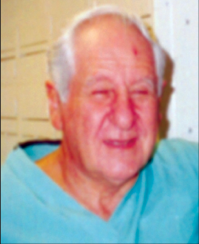Translate this page into:
Leslie Harold Blumgart (7 December 1931–27 September 2022)

Born in South Africa, Professor Blumgart started his carrier as a dental surgeon with a Bachelor in Dental Surgery (BDS) from Witwatersrand University in 1954. He subsequently did his MB,ChB and MD from the University of Sheffield. He was Senior Lecturer and Deputy Director of Surgery at the Welsh National School of Medicine from 1970 to 1972. He was St Mungo Professor at Glasgow Royal Infirmary during 1972–79. He became Professor of Surgery at Royal Postgraduate School of Medicine in London in 1979 and then Director of Surgery at Hammersmith Hospital. He was Professor and Director of Visceral and Transplantation Surgery at the University of Bern from 1986 to 1991. He became Enid A. Haupt Professor of Surgery at The Memorial Sloan Kettering Cancer Center (MSKCC), New York in 1991. He was also Professor of Surgery at the Cornell University since 1992. He was designated Chief of Hepato-Biliary Surgery and Director of the Hepato-Biliary Diseases in 1995. He spent the last 31 years of his life at The MSKCC and was instrumental in its growth as the leading centre for Hepatobiliary and Pancreatic Oncology. He made immense contributions to the multidisciplinary approach to cancer. He was honorary member of several hepato-pancreato-biliary (HPB) associations, received several lifetime achievement awards and gave lectures all over the world. He was elected Emeritus Professor at MSKCC in 2021 and received several ‘Teacher of the Year’ awards.
I met Professor Blumgart as an observer at MSKCC, New York, in 2002. Here was a colossus who had transformed us into hepato-biliary surgeons. My generation had grown reading his book Blumgart’s Surgery of the liver, biliary tract and pancreas, now in its 7th edition. It is the most read book on the subject by students and teachers alike. He was down to earth and looked into all practical details. He was a keen teacher who wanted to transfer his knowledge and skills. I watched him on the rounds, mortality meetings and departmental case discussions. He had an immense presence and authority borne of years of learning and hard work. In the operation theatre he was a deft artist with a meticulous technique. He liked to explain the fine nuances to the students and observers such as me. He had procured a sky camera, operated by a technician, so that we in the operating room could watch his methods clearly. He was ever helpful to colleagues with suggestions on technique and approach. I learnt several aspects of liver surgery by observing him. I especially learnt Blumgart’s pancreatic anastomosis from him. On coming back, I have taught my students the same. His legacy is carried on by many of his students and their students as well.
Professor Blumgart was remarkably active in his 90 years of life. He has 788 publications and more than 50 000 citations, which bear a testimony to his illustrious carrier. He edited 15 books and wrote nearly 150 chapters. He made several contributions in the field of surgery, which bear his name. He standardized hepaticojejunostomy, resection of cholangiocarcinomas, liver resections, pancreatico-jejunostomy, among several others. With his efforts, he made HPB surgery safer for patients. From a complicated surgery with massive blood loss, HPB surgery is now more standardized, safer and more accessible. He created a video library of procedures which was helpful in training surgeons of the next generation. He created a legacy of students who will take it further. Several of his students are occupying high positions and heading HPB units all over the world. They are ever grateful to him for his contribution in their growth. He was rightly bestowed the honor of ‘Living Legend’ by the International Hepato-Pancreato-biliary Association. Our salutations Professor. You live on!




